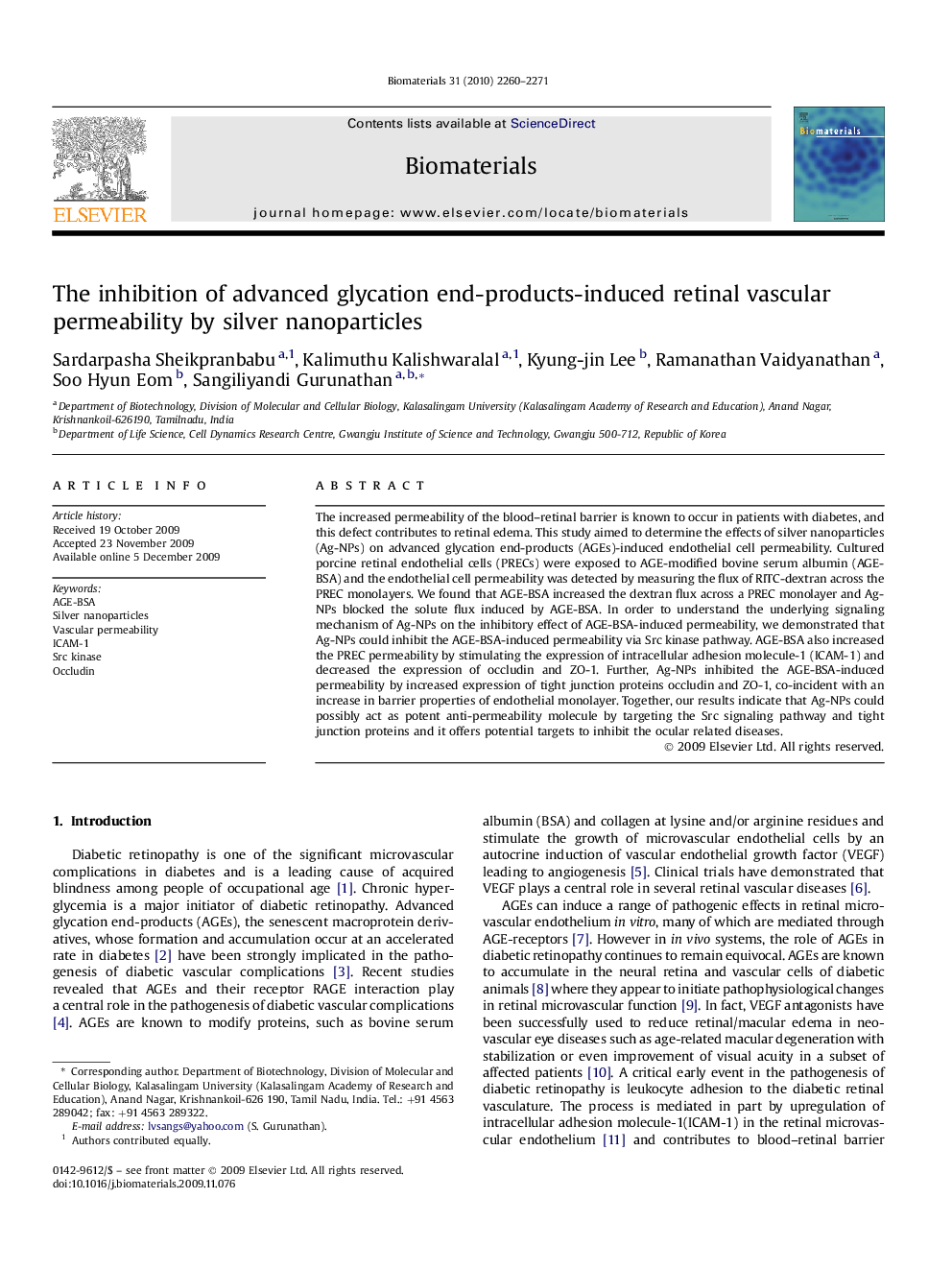| Article ID | Journal | Published Year | Pages | File Type |
|---|---|---|---|---|
| 8681 | Biomaterials | 2010 | 12 Pages |
The increased permeability of the blood–retinal barrier is known to occur in patients with diabetes, and this defect contributes to retinal edema. This study aimed to determine the effects of silver nanoparticles (Ag-NPs) on advanced glycation end-products (AGEs)-induced endothelial cell permeability. Cultured porcine retinal endothelial cells (PRECs) were exposed to AGE-modified bovine serum albumin (AGE-BSA) and the endothelial cell permeability was detected by measuring the flux of RITC-dextran across the PREC monolayers. We found that AGE-BSA increased the dextran flux across a PREC monolayer and Ag-NPs blocked the solute flux induced by AGE-BSA. In order to understand the underlying signaling mechanism of Ag-NPs on the inhibitory effect of AGE-BSA-induced permeability, we demonstrated that Ag-NPs could inhibit the AGE-BSA-induced permeability via Src kinase pathway. AGE-BSA also increased the PREC permeability by stimulating the expression of intracellular adhesion molecule-1 (ICAM-1) and decreased the expression of occludin and ZO-1. Further, Ag-NPs inhibited the AGE-BSA-induced permeability by increased expression of tight junction proteins occludin and ZO-1, co-incident with an increase in barrier properties of endothelial monolayer. Together, our results indicate that Ag-NPs could possibly act as potent anti-permeability molecule by targeting the Src signaling pathway and tight junction proteins and it offers potential targets to inhibit the ocular related diseases.
